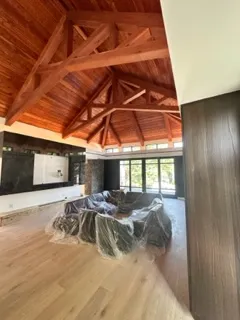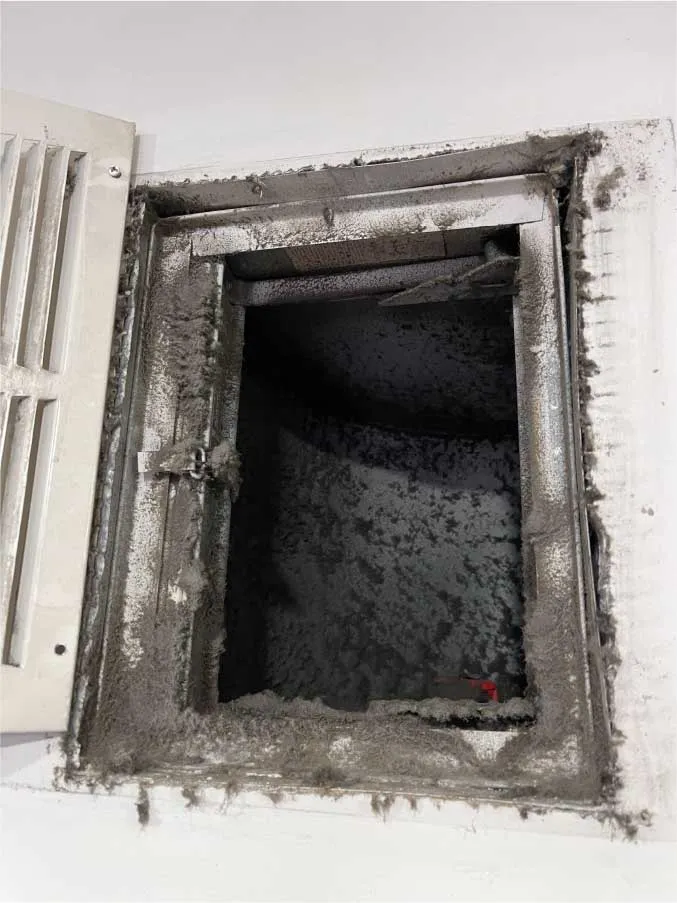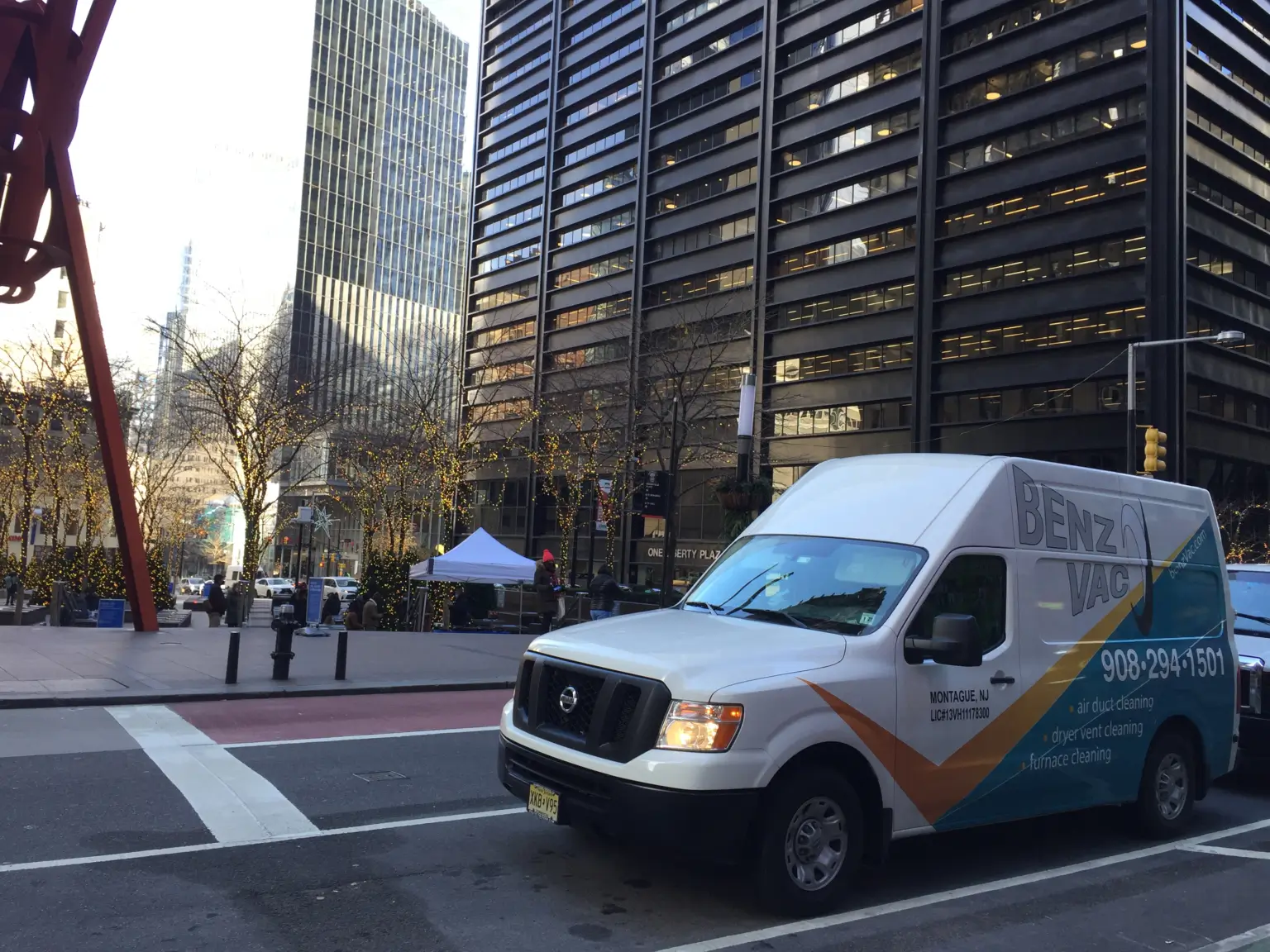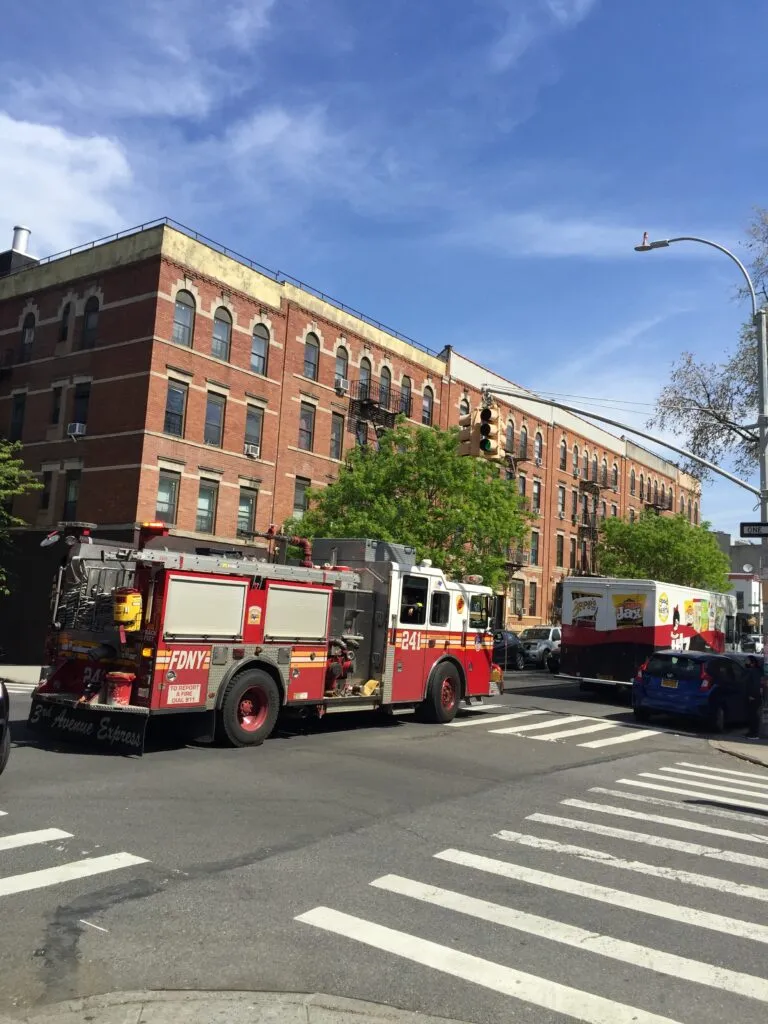If you’re our regular reader, you may have noticed how often again and again we emphasize cleaning air ducts in office. We talk about home duct cleaning and the dire need for HVAC cleaning. But today we’re going to talk about commercial duct cleaning. Home duct cleaning refers to all the processes involved in the deep cleaning of your home’s ductwork whereas commercial duct cleaning refers to the processes involved in the duct cleaning of commercial facilities.
Both home duct cleaning and commercial duct cleaning have their own significance. However, commercial duct cleaning takes the lead when it comes to the massive impact of dirty ductwork. When you’ve dirty ductwork at home, the health of a few members is at stake, but with clogged ductwork at a commercial facility you take the risk of harming thousands of people. Having said that, we don’t mean to overlook HVAC cleaning at your home. If you ever try to ignore duct cleaning just think that it’s the health of your family members that’ll suffer the most. As it is always said, health should always be our first priority.
What Is Commercial Duct Cleaning?
Using your building’s air ducts, your HVAC system pulls air into its system. Air is heated or cooled by your air conditioner or furnace and pushed back into your building through your ducts.
Dust, debris, and allergens get trapped in the ducts as the air travels. These accumulate over time, and only a professional can thoroughly clean and eliminate these particles from your ducts. You can try to clean air ducts at home by yourself, however, that is not possible in office building ductwork, as you’ve got HVAC ducts behind the walls and above the ceiling. Understandably, these are not easy-to-reach areas for you.
Duct cleaning services can easily reach there. They’ve got the right tools, expertise, and processes to handle your HVAC cleaning. Professional duct cleaning services deep clean these HVAC components during air duct cleaning.
- Internal air ducts
- Motor housing
- Diffusers
- Heating coils
- Heat exchanger
- Supply and return air ducts
- Fan housing
- Grills
- Unit housing
- Cooling coils
- Drain drip pans
Each part of your HVAC system requires maintenance, so you should schedule commercial duct cleaning annually. In other cases, you may need to do it more often depending on various factors. For instance, if there has been some construction work taking place at your site, you should call duct cleaning services after the construction work ends.
Commercial HVAC Air Duct Cleaning Basics
Commercial buildings are bustling with activity, with employees, clients, and visitors coming and going every day. However, what often goes unnoticed is the impact that the building’s ductwork system can have on the overall health and efficiency of the space.
The significance of commercial duct cleaning reflects from the advantages that it offers to office buildings, including improved air quality, the removal of dust, debris, and other foul smells emitting from the HVAC systems, increased system efficiency, and reduced energy bills.
If the ductwork of your office building is dirty and the dust spots are easily recognizable surrounding the register covers and ceiling space around the registers, thorough air duct cleaning can make the dirty surfaces clean and crystal clear. A ductwork cleaning might also be needed if anyone in the office suffers from breathing issues, headaches, or feels bad at work.
Business owners need to understand that HVAC duct cleaning projects are different for commercial buildings. The NADCA standard calls for putting the HVAC system under negative air pressure and cleaning the ductwork with source removal techniques. For all ducts, the process is the same, but the cleaning techniques can be different based on the building. A large commercial building can take one day to several weeks to clean depending on its size.
Many business owners worry about work disturbances during the commercial duct cleaning process. And their concern is genuinely valid. We know how much running a business involves stress and strict time schedules. In commercial buildings, duct cleaning usually happens after hours. The system will need to be turned off, there are air lines and hoses going throughout the facility for the cleaning, and the equipment utilized for the duct cleaning can disturb regularly scheduled business operations. The best thing to do is to consult professional duct cleaning services and inform them about your work schedule so that you can mutually decide on an appropriate time for duct cleaning.
HVAC cleaning and Air Duct Cleaning Signs
You’ll know it’s time to clean your commercial ductwork if you see these signs:
- The air flow isn’t great
- Frequent replacement of filters
- Unreasonably skyrocketing energy bills
- Major renovations
- Vents blowing dust
- Cleaning constantly
- Ductwork infestation signs
- Vents emit foul odor
- A poorly performing HVAC system
- Ductwork mold
Duct Cleaning Certification by NADCA
Cleaning the whole HVAC system is recommended by NADCA.
- Air cleaner
- Air plenum
- Grills
- Air filter
- Registers
- Drain pan
- Heat exchanger
- Air ducts
- Coils
- Blower motor and assembly
NADCA members handle all kinds of commercial and industrial projects. So when you hire a NADCA member you have the assurance that you’ll receive exceptional performance. Techs have to follow industry standards and guidelines and inform clients about any problems they might face.
Mainly, there are three duct cleaning methods: negative pressure, air sweep, and mechanical agitation. When it comes to cleaning air ducts and ventilation systems, the negative pressure technique is the best. In this method, a contractor vacuums the HVAC system under negative pressure.
Dirt and debris adhered to interior surfaces are removed with brushes inserted into the ducts and drawn through the vacuum. Undissolved dirt and debris are sucked into a vacuum and thrown away.
Why Should I Get My Ducts Cleaned?
Deteriorated indoor air quality, duct leakage, and inadequate filtration can pave the way for dust to get inside your air duct. After accumulating to a certain level, this dust breaks off and reappears in the air. You could observe that your workplace gets dustier faster in this situation. And that’s only problem 1.
The second problem starts when mold growth appears inside your ducts. It’s easy for mold to grow when there’s a lot of humidity in the building or water leaks in the ducts. Your whole building will end up circulating mold spores from the ducts. The worst part is that exposure to mold spores can also aggravate allergies and asthma.
You should also clean your ducts if you have pests. Pests like mice, squirrels, bees, and beetles often find their way into ducts. When they’re done nesting, they leave behind nesting materials, hair, and dead bugs. Your rooms are then filled with these particles. This means that you and your employees will breathe in this contaminated air.
In a nutshell, ensuring health safety and HVAC system protection requires regular air duct cleaning from professional duct cleaning services.
Why Commercial Buildings Need Duct Cleaning
Dirty ducts can negatively influence employees’ productivity and efficiency. Frequent headaches and respiratory issues will prevent them from coming to the office regularly. And that’s the least you want. To avoid such a situation, you must schedule your commercial duct cleaning with reputable duct cleaning services.
It’s bad for indoor air quality (IAQ) when air ducts are contaminated. Air pollution in buildings (also called sick building syndrome, or SBS) is one of the biggest health risks. Professional duct cleaning services can help you improve the indoor air quality of your facility and ensure employee health and safety.
It’s important to keep your HVAC system clean to keep it running smoothly. Air duct cleaning is regulated by the National Air Duct Cleaners Association (NADCA), and when done right, it can get you a lot for your money. The benefits of commercial duct cleaning include:
- Clean air to breathe in
- Improvements in government inspection ratings
- Improved efficiency of heating and cooling equipment
- Less illness means greater productivity
- Savings on operations and maintenance
- Cleaner classrooms, offices, and facilities.
High-efficiency HVAC filters and high-quality IAQ in your office building can keep your ducts clean for a long time. Still, every three to five years the ductwork should be professionally inspected.
Keeping IAQ proper
The poor quality of indoor air is associated with lower student test scores and worker morale. We become ill when indoor air contains allergens, mold, bacteria, and other pathogens. An unhealthy indoor environment can cause headaches and eye, nose, and throat irritation. Additionally, it causes allergies and asthma. The result is lost productivity, and consequently, businesses suffer from productivity losses.
Employees are healthier when they have clean air to breathe. This helps maximize productivity. Additionally, it makes the system work more efficiently, saving you money.
The best way to keep IAQ healthy is to maintain HVAC equipment. The ducts play a big role in that. Considering the significance you should not give air duct cleaning any second thought. Rather, you focus on understanding the frequency of commercial duct cleaning required.
Advantages of Commercial Air Duct Cleaning
Extended Lifespan of HVAC Systems
Commercial spaces are expensive when it comes to heating and cooling. It’s not uncommon for companies to have huge utility bills. These bills skyrocket when you run an HVAC system whose ducts are filled with dirt. Clogged ductwork forces the HVAC system to work harder. To meet the required efficiency level, the HVAC system has to run for extra time which eventually causes increased energy consumption.
These pressing issues can be solved by scheduling commercial duct cleaning. Cleaning your commercial HVAC system annually prevents grime from building up. You don’t have to run your air conditioner and furnace as hard to stay cool. Cleaning your air ducts regularly eases the burden on your HVAC system.
Healthy Air Quality with Reduced Allergens
You can’t avoid dirt, dust, and bacteria building up inside your ductwork. Contaminated air can cause allergy attacks and asthma attacks. You, your employees, and your customers breathe worse air when more particles and debris circulate around the building. Inconsistent cleaning and changing seasons exacerbate the problem. Regular commercial duct cleaning can eliminate this problem and provide you with a healthier workplace.
Dirt and Dust Control
Your HVAC system picks up contaminants from shoes, clothes, and open doors. Air is forced through ducts every time heat or air conditioning is activated. The duct system and the building are subsequently contaminated with newly introduced debris. With commercial HVAC cleaning, you can prevent grime accumulation.
Preventing Mold and Odors
Keeping your vents healthy requires regular commercial duct cleaning and maintenance. If you avoid air duct cleaning, you’ll be inviting mold and foul smells into your office. Air duct cleaning methods can help prevent mold growth in your office by spotting warning signs early. It’s better to deal with these problems sooner rather than later.
Removes Stains
The dust from your air vents or dirty furnace filters can stain your furniture, carpeting, and upholstery. By cleaning the ducts, you’ll make sure there’s no leftover liquid or remnants on the furniture. You may want your other surfaces as well as your air ducts cleaned to ensure that your office area is hygienic.
Cleaning your ducts regularly will prevent fluids and stains from accumulating on your furniture. In addition, they’ll clean different parts of your office or building.
Building Maintenance
People continue to breathe air inside a building, which accumulates dirt, dust, pollen, and other allergens over time. Air ducts collect and purify air from inside rooms, then transfer it to HVAC systems. By using the same air ducts, the system circulates cooled or warmed air into the building.
A dirty duct system accumulates dust and debris over time, which gets recirculated into the rooms through the same duct system. It makes the inside of the building unclean. You can seriously damage your business’s reputation and decrease revenue if you ignore a dirty interior. In contrast, air duct cleaning in commercial buildings will maintain the cleanliness of your building.
Keeping Employees Healthy
The maximization of profits largely depends on increased productivity. The more productivity you have the more profit you get. However, dust and allergens can cause health problems for your employees, forcing them to take time off. Your business’s productivity will suffer and profit will plummet.
HVAC cleaning ensures your office building’s cleanliness and your employees’ health and safety. So you can ensure maximum productivity by having them work at their best.
Fire Prevention
Whenever dirt and dust clog up your air ducts, less air can pass through. A narrow aperture allows hot air to pass through, heating ducts and other systems nearby. In addition, it is important to note that some debris inside your air ducts is flammable, creating a fire hazard.
Regularly cleaning your commercial air ducts will keep these fire hazards from happening, saving you lots of money on property damage and lawsuits. You would’ve also put yourself, your employees, and even your customers at risk.
Choosing the Right Commercial Air Duct Cleaning Company
Buildings are unique, so you should talk to a professional HVAC contractor about what you need. In order to choose a mechanical service provider that will fit your needs, you should always research the history and reputation of the company. You may also want to inquire about the details of the training, certifications, insurance, and the like.
How Does Commercial Air Duct Cleaning Work?
After learning why you should clean your commercial air ducts, you probably want to know how it works. The whole process is outlined here.
- Antimicrobial solutions will be used to ensure there are no bacteria during cleaning.
- Afterward, they will fog your air ducts so that the fog gets into every nook and cranny, getting rid of every contaminant and sanitizing them
- All the dust, dirt, mold, and other debris will be manually cleaned out of your air ducts by professionals.
HVAC Maintenance vs. Duct Cleaning
HVAC Maintenance
Keeping your HVAC system clean and maintained ensures it works right. They’re all different, though.
Maintaining your HVAC system keeps it running smoothly. Your system will last longer and need fewer repairs if you do this.
Your HVAC service technician will inspect multiple parts of your system during the maintenance procedure. These parts include:
- Electrical wiring
- Capacitors
- Ductwork
- Condenser coils
The replacement of worn parts follows the inspection. You will also get an air filter replacement to improve indoor air quality and reduce HVAC stress. Plus, they’ll lubricate your moving parts. Among other things, they’ll clean your drain lines, evaporator coils, drain pan, and condenser coils. Outdoor units will be cleaned, and weeds won’t grow around them.
Air Duct Cleaning
A duct cleaning involves cleaning the supply, return, and intake vents of your duct system with professional equipment. Your ductwork is inspected using mirrors and CCTV cameras.
After they see how dirty your ducts are, they’ll decide what tools to use. To clean, they might use brushes, vacuums, and other machines.
They’ll create negative air pressure with a vacuum collector. The vacuum collection unit collects dirt and debris so it doesn’t spread around your house. They’ll inspect the ducts once they’re done to make sure they’re clean.
Fine-tuning the whole system is the goal of HVAC maintenance. Conversely, duct cleaning just takes care of your ductwork. You should hire a professional instead of doing these things yourself. Make sure your HVAC system is maintained annually and your ducts are cleaned every two years.
Ductwork Cleaning Frequency
For maximum efficiency, air ducts must be cleaned regularly. It remains unclear to many building owners how often their commercial ductwork should be cleaned by professionals. A building’s type and condition determine how often commercial ductwork needs to be cleaned. Ductwork must be inspected annually. Some of them do not require cleaning every year. Cleaning the ducts requires a professional assessment.
Several factors influence the frequency of ductwork cleaning. It is recommended that commercial properties clean their ductwork every three to five years. Companies that produce combustible dust hazards may need to clean ductwork more frequently.
Final Thoughts
The gist is that if you wish to ensure maximum efficiency of your HVAC system and the health and safety of your employees and customers, you need to get frequent commercial duct cleaning.




